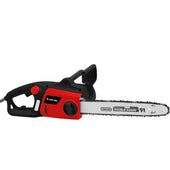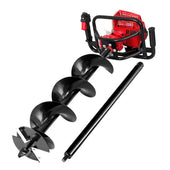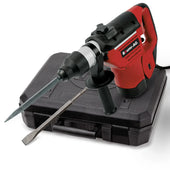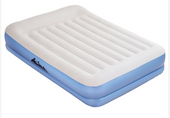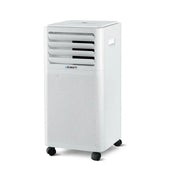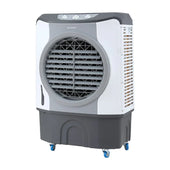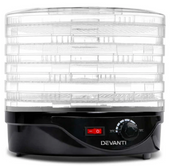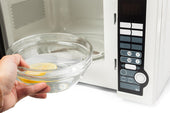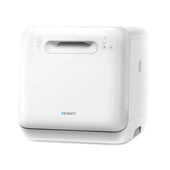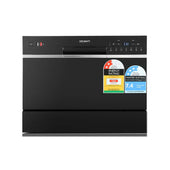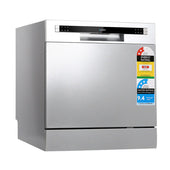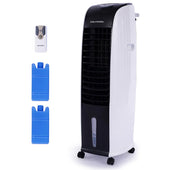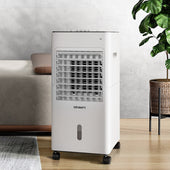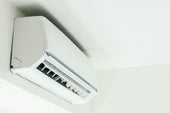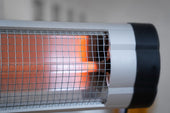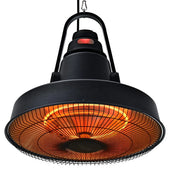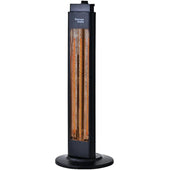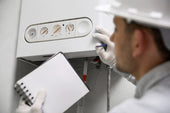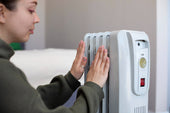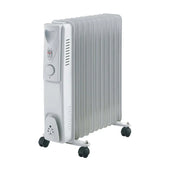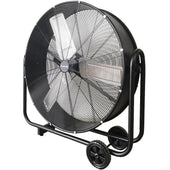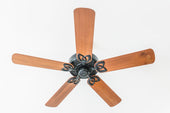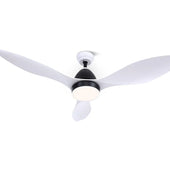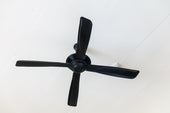Introduction to Bidet Cleaning and Maintenance
Proper cleaning and maintenance of a bidet are essential for its longevity and hygiene. Regular care ensures that the device functions effectively and minimises the build-up of bacteria, mould, or limescale. Different types of bidets, such as standalone models, bidet seats, or attachments, may require slightly varied cleaning methods, but the core principles remain consistent.
Key areas to focus on include:
- Nozzles: These are the most crucial parts to keep sanitised, as they come into contact with water during use.
- Surfaces: The surrounding exterior should be wiped to remove residues of moisture or dirt.
- Filters and hoses: These components need periodic inspection to avoid blockages.
Using mild cleaning agents and adopting a routine schedule enhances cleanliness and performance.
Why Regular Maintenance is Essential for Your Bidet
Regular maintenance ensures a bidet remains hygienic, functional, and long-lasting. Over time, build-up of mineral deposits, soap residue, or bacteria can occur, leading to decreased performance and potential health risks. Regular cleaning prevents these issues and ensures optimal water flow, especially During Days when usage might be higher.
Unmaintained bidet nozzles may become clogged, disrupting water pressure and spray quality. Routine maintenance also helps in identifying wear, such as damaged seals or weakened hoses, which could result in leaks when left unchecked.
Proper upkeep guards against unpleasant odours, prolongs the unit's lifespan, and maintains its efficiency. Regular attention reduces the likelihood of costly repairs or replacement demands.
Tools and Supplies You'll Need for Cleaning
To properly clean and maintain a bidet, having the right tools and supplies is essential. The process requires specific items to ensure the bidet remains hygienic and functional.
Cleaning Tools
- Microfibre cloths: Soft and non-abrasive, perfect for wiping surfaces.
- Toothbrush or small scrub brush: Ideal for cleaning hard-to-reach crevices.
- Spray bottle: Useful for applying cleaning solutions evenly.
Cleaning Supplies
- Mild detergent: Gentle enough not to damage the bidet's components.
- White vinegar: Natural and effective for tackling limescale and stains.
- Baking soda: Helpful for addressing stubborn grime.
- Distilled water: Prevents mineral build-up in spray nozzles.
Protective Items
- Rubber gloves: To protect hands from harsh cleaning agents.
- Face mask: Optional but useful if sensitive to cleaning smells.
Consistently using these tools ensures thorough and safe cleaning.
Step-by-Step Guide to Cleaning a Bidet Seat
- Turn Off the Power Begin by switching off the bidet seat’s power and unplugging it from the electrical outlet to ensure safety.
- Remove the Seat (if detachable) Check if the bidet seat is detachable. If so, release it using the manufacturer’s recommended method, often a button or a latch.
- Wipe the Surface Use a soft, damp cloth with a mild detergent to clean the surface of the seat. Avoid abrasive materials that may cause scratches.
- Clean the Nozzle Activate the nozzle cleaning mode if the bidet has one. For manual cleaning, gently wipe the nozzle with a soft cloth and warm water.
- Remove Hard Water Deposits For mineral deposits, apply a vinegar and water solution. Let it sit briefly, then scrub gently with a soft-bristled brush.
- Clean the Filters Detach and rinse water filters under running water. This ensures smooth water flow and machine performance.
- Rinse and Dry Wipe off any remaining residue with a clean, damp cloth. Dry all parts thoroughly before reassembling.
- Reassemble and Reconnect Attach the seat securely, plug it back into the outlet, and switch on the power to resume use.
Tips for Cleaning Integrated Bidet Nozzles
Cleaning bidet nozzles is essential for maintaining hygiene and ensuring proper functionality. Follow these steps to clean integrated bidet nozzles effectively:
- Activate the self-cleaning feature: Most modern bidets include a built-in self-cleaning function. Activate this feature regularly to prevent the build-up of residue or debris on the nozzle.
- Manually clean with soft materials: Use a soft cloth or gentle toothbrush to wipe the nozzle. Opt for non-abrasive materials to avoid scratches on the surface.
- Use mild detergents: If stubborn grime persists, apply a mild detergent diluted in water. Avoid harsh chemicals that could damage nozzle coatings.
- Rinse thoroughly: After cleaning, rinse the nozzle with warm water to ensure all soap or cleaning solutions are fully removed.
Periodic cleaning helps maintain the bidet's efficiency.
How to Remove Hard Water Stains and Mineral Deposits
Hard water stains and mineral deposits can accumulate on a bidet over time, especially on nozzle areas and around the bowl. To tackle these effectively, follow these steps:
- Prepare your cleaning solution: Mix equal parts white vinegar and water in a spray bottle. Vinegar is a natural solution that effectively dissolves mineral deposits.
- Spray and let it sit: Apply the vinegar solution generously to the affected areas and allow it to sit for 10–15 minutes. This loosens tough stains.
- Scrub gently: Use a soft, non-abrasive cloth or brush to scrub the deposits away. Avoid using harsh scrubbers to prevent surface damage.
- Rinse thoroughly: Wipe the cleaned areas with a damp cloth to ensure all residue is removed.
- Repeat if necessary: Persistent stains may require repeating the process for full removal.
Dealing with Odours and Keeping Your Bidet Fresh
Keeping a bidet as an essential piece of bathroom furniture free of odours requires regular cleaning and attention. Residue buildup, moisture, and exposure to bacteria can contribute to unpleasant smells. Addressing these elements ensures a hygienic and fresh experience.
Steps to Manage Odours
- Clean the Nozzle Frequently: Use warm water and mild detergent to remove dirt and bacteria where odours typically originate.
- Wipe Surrounding Areas: Regularly clean the bidet seat, control panel, and surrounding surfaces with disinfectant wipes or spray.
- Deodorising Agents: Apply odour-neutralising products like sprays or natural options such as white vinegar diluted with water.
Tips for Maintaining Freshness
- Dry Surfaces Properly: Prevent musty smells by thoroughly drying the bidet seat after cleaning.
- Use Odour Absorbers: Place activated charcoal or baking soda nearby to absorb lingering smells.
- Inspection for Leaks: Regular checks ensure no water pooling that causes mould-related odours.
Attention to maintenance routines enhances cleanliness and long-term functionality.
When and How to Replace Bidet Filters
Regular replacement of bidet filters is essential for optimal performance and hygiene. Filters should typically be replaced every 6 to 12 months, depending on water quality and usage frequency. Hard water areas may require more frequent replacements to prevent mineral buildup.
Signs It’s Time to Replace the Filter
- Reduced water pressure: Indicates clogging due to debris.
- Discolouration or odour: Signals contamination in the water flow.
- Expiry date surpassed: Check the manufacturer's guidelines.
Steps to Replace the Filter
- Turn off the water supply to the bidet.
- Unscrew the filter housing carefully.
- Remove the old filter and inspect for sediment or calcium deposits.
- Insert the new filter, ensuring it aligns properly.
- Reattach the filter housing and tighten securely.
- Turn the water supply back on and test for leaks.
Maintaining a replacement schedule ensures clean and effective bidet functionality.
Routine Maintenance for Longevity and Performance
Routine maintenance ensures your bidet operates efficiently while prolonging its lifespan. Regular cleaning prevents the build-up of residue, ensuring optimal hygiene and functionality. Start by unplugging the unit and turning off the water supply to prevent accidents.
Steps for Regular Maintenance:
- Clean Nozzles: Wipe the nozzles gently with a soft cloth and, if removable, soak them in a vinegar solution to remove mineral deposits.
- Inspect Filters: Check and clean or replace water filters regularly to maintain water purity.
- Wipe Surfaces: Use a mild soap solution to gently clean external surfaces, avoiding abrasive cleaners.
- Check Connections: Inspect all water and power connections for tightness and leaks.
Maintaining diligence with these practices will keep the device functioning smoothly.
Troubleshooting Common Bidet Issues
Bidet issues can arise due to improper installation, usage, or maintenance. Addressing them efficiently is key to ensuring optimal performance.
Common Issues and Solutions:
- Low Water Pressure
- Check the water valve to ensure it is fully open.
- Inspect for clogs in the nozzle or water supply line.
- Leaking Bidet
- Tighten loose fittings around hoses and valves.
- Replace worn-out washers or seals.
- Non-Functioning Spray Nozzle
- Clean the nozzle tip to remove debris buildup.
- Verify the control settings on the bidet mechanism.
- Strange Odours
- Clean the bidet regularly, focusing on hidden crevices.
- Check the water supply for contaminants or residues.
Quick fixes often resolve these problems; otherwise, professional assistance may be necessary.
Eco-Friendly Cleaning Products and Practices
Choosing eco-friendly cleaning methods for your bidet ensures effective maintenance while minimising environmental impact. Opt for biodegradable, plant-based cleaners free from harsh chemicals like chlorine or ammonia. These can help protect both the plumbing system and water sources. White vinegar mixed with water serves as a natural, cost-effective disinfectant. For wiping surfaces, reusable microfibre cloths reduce disposable waste and are highly effective at trapping dirt and bacteria.
When cleaning detachable nozzles or filters, consider soaking them in a solution of warm water and baking soda. Always avoid abrasive scrubbing tools to prevent damage. Sustainable practices preserve your bidet’s functionality and safeguard the planet simultaneously.
The Importance of Reading the Manufacturer's Manual
Understanding the manufacturer's manual is crucial for maintaining and cleaning a bidet properly. Each bidet model comes with unique features, materials, and cleaning instructions specified by the manufacturer. These details help users avoid damage caused by incorrect cleaning products or techniques.
The manual often includes:
- Recommended cleaning agents to prevent material degradation.
- Step-by-step maintenance instructions tailored for that model.
- Warranty details, ensuring compliance with maintenance guidelines.
- Troubleshooting tips for minor issues.
Referring to the manual ensures the bidet functions optimally while extending its lifespan. Overlooking this essential resource can lead to costly mistakes or void warranties, making it an indispensable guide.
Mistakes to Avoid During Cleaning and Maintenance
- Using harsh chemicals: Strong cleaners, such as bleach or abrasive powders, can damage the bidet’s materials and lead to discoloration or corrosion. Always opt for mild, non-abrasive cleaning agents recommended by the manufacturer.
- Skipping regular cleaning: Allowing grime or mineral deposits to build up can compromise the bidet’s functionality and hygiene. Regular maintenance prevents unnecessary repair costs and ensures optimal performance.
- Ignoring the nozzle: The nozzle is a crucial part of the bidet. Neglecting to clean it thoroughly may result in reduced efficiency and possible contamination.
- Using improper tools: Avoid using hard-bristled brushes or metal tools, as these can scratch or damage the surfaces. Microfibre cloths or soft sponges are better alternatives.
- Not following manufacturer instructions: Ignoring specific guidelines can void the warranty and damage the bidet components. Always review the instruction manual carefully.
How Often Should You Clean Different Parts of Your Bidet
Cleaning a bidet regularly ensures hygiene and prolongs its lifespan. Different components require varying levels of attention:
- Nozzles: Clean once a week to remove residue and prevent bacterial build-up. Some bidets offer self-cleaning functions; however, manual cleaning ensures thoroughness.
- Seat and Lid: Wipe down daily with a gentle cleaner to eliminate dirt and bacteria from frequent use.
- Control Panel/Remote: Sanitise weekly to prevent grime from accumulating on buttons or touch surfaces.
- Water Filter: Inspect and replace every six months or as directed by the manufacturer. Filters ensure efficient performance.
- Hoses and Connections: Check for leaks and clean quarterly to maintain functionality.
Maintaining a consistent cleaning schedule keeps the bidet sanitary and functional.
Final Tips for Keeping Your Bidet in Perfect Condition
- Use Appropriate Cleaning Agents: Stick to mild, non-abrasive cleaners to prevent damaging the surface or internal components. Avoid bleach or harsh chemicals.
- Inspect Regularly: Routinely check for limescale buildup, leaks, or loose connections to address issues early.
- Flush Nozzles Frequently: Activate the self-cleaning mode or manually clean the nozzles to remove residue and prevent clogging.
- Replace Filters: If the bidet includes water filters, replace them as recommended by the manufacturer.
- Avoid Excessive Force: When adjusting or cleaning components, handle them gently to prevent breakage.
- Follow Manual Guidelines: Always adhere to cleaning and maintenance instructions specified in the manual.




